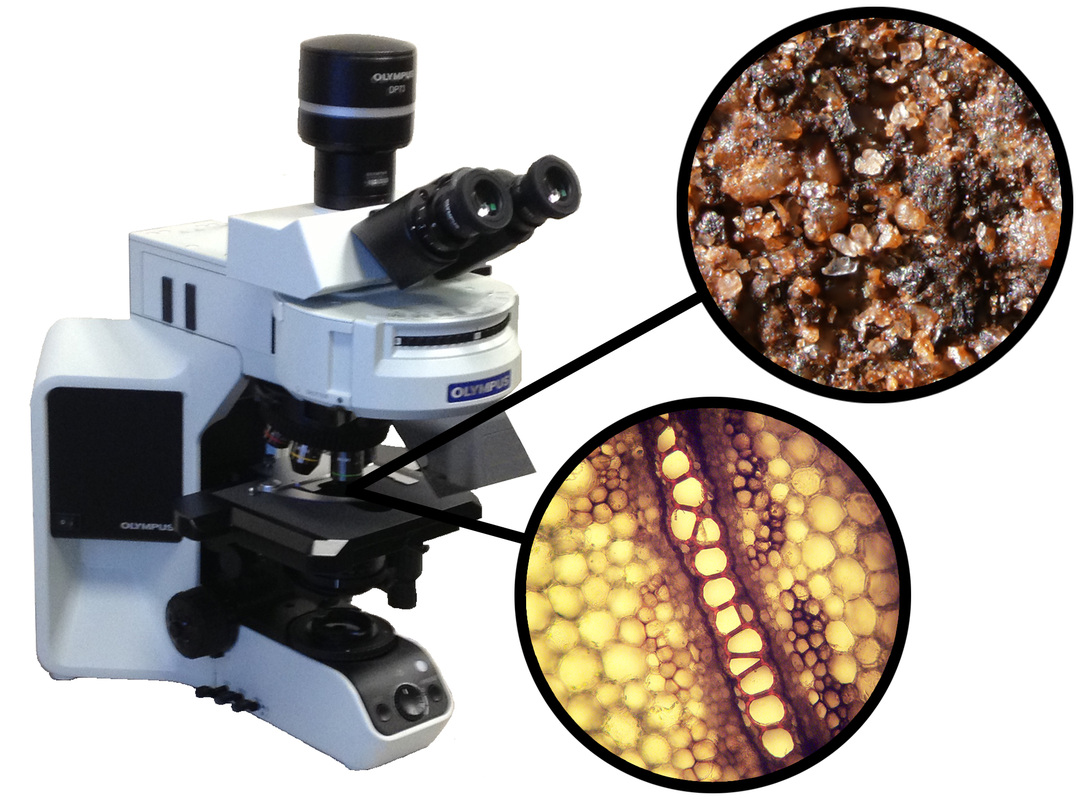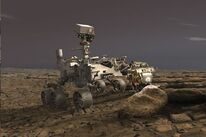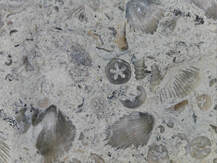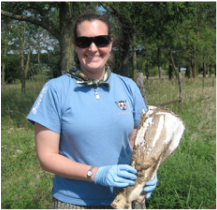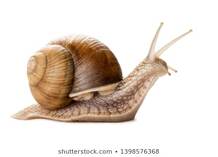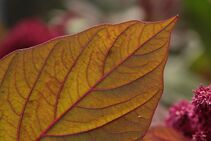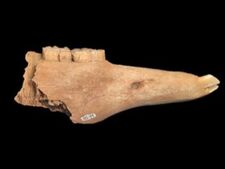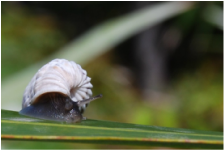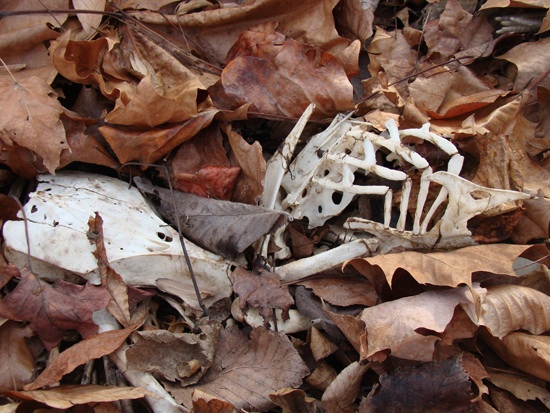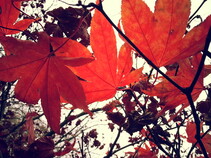Elementary School
|
Invisible Worlds
There is a lot more to the world than what we can see with the unaided eye. Many life forms and minerals are too small to see and microscopes help us explore this otherwise invisible world. In this presentation, we will examine the microscopic world around us, including minerals in rocks, tiny plants and animals, and even your own cells! Students will learn how to build their own microscope with a few simple parts (and a cell phone with a camera). Presenter: Dr. Andy Czaja (Associate Professor) Contact: [email protected] Mars 2020 mission and the search for ancient life on Mars
As a science team member of NASA's Mars 2020 mission, which includes the Perseverance rover, I am hoping to find conclusive evidence that life once existed on Mars. Because if so, it probably exists there now, too! This presentation will cover how the mission will work, where on Mars we are looking, what we are hoping to find, and what it will all mean. Presenter: Dr. Andy Czaja (Associate Professor) Contact: [email protected] Fossils in the Walls
The rocks under Cincinnati are rich with fossils that are older than the oldest dinosaurs! Geologists have been studying these rocks to learn about extinct ocean animals like trilobites and sea lilies for hundreds of years. We can study these rocks too, in the many rock walls built from fossil-rich Cincinnati limestone found around the city. In this activity, students will see and touch Cincinnati fossils, learn about the animals that formed them, and find out where to see more fossils in rock walls in their neighborhoods. The activity can be adapted for all elementary ages and take place in-person or virtually. The presenter can loan out fossils in advance for virtual presentations. This activity can be modified to satisfy the life science learning standards for Grades K-5 and the Earth science learning standards for Grade 4. Presenter: Andrea Corpolongo (PhD Student, UC Department of Geology) Contact: [email protected] Bones
What can bones tell us about an animal? There is a lot we can learn from bones. This hands-on activity will reveal some of the ways we can identify an animal’s diet using its skull or other bones. This presentation would fit best with Ohio Learning Standards for Life Sciences and can adapted for students K-12 (e.g., for first grade "1.LS.1 Living things have basic needs, which are met by obtaining materials from the physical environment" or for eighth grade "8.LS.1 The fossil records provides evidence that changes have occurred in number and types of species.") Presenter: Dr. Brooke E. Crowley (Associate Professor) Contact: [email protected] Leaf Waxes
What can leaf waxes tell us about past climate change? Paleoclimatologists can use material such as leaf waxes preserved in sediment archives to reconstruct past hydrological processes including precipitation and evaporation. We can use these records to try and understand how the hydrological cycle will change in the future! This presentation can be adapted to Ohio Learning Standards for Environmental Science for students K-12. Presenter: Meg Corcoran (PhD Student, UC Department of Geology) Contact: [email protected] Climate and Diet: A Snail's Perspective
What exactly do snails do all day? What do they eat? While these might seems like simple questions, it turns out there is a lot we can still learn about these relatively simple organisms. Learn the answers to these questions and what snails can teach us about climate change in this series of mini lessons and outdoor activities. Presenter: Zeke King Phillips (PhD Student, UC Department of Geology) Contact: [email protected] Seeing the Forest for the Trees
How do we study plant communities? How are they impacted by climate, how do animals change them, and how can we use them to learn about the past? Learn how we can answer these questions, using the present to inform us about the past. This can incorporate math as well as science! This activity can be modified to satisfy the life science learning standards of grades K-5, the physical science standards of K and 4, and the earth science standards of 4. Presenter: Emily M. B. Simpson (PhD Student, UC Department of Geology) Contact: [email protected] Phenomenal Fossils, and How They Preserve
How do remains become fossils . . . or not? We will talk about the types of fossil preservation and this affects the scientific stories that can be told. This activity can be modified to satisfy the life science learning standards of grades 1-4, the physical science standards of K and 4, and the earth science standards of 4. Presenter: Emily M. B. Simpson (PhD Student, UC Department of Geology) Contact: [email protected] |
Middle School and High School
|
Tooth tales
There's more to learn from an animals teeth than if they were a carnivore or herbivore! Did you know that we can find out what, and even where, some animals ate and how they interacted with their habitat? We'll talk about some of the ways that we do this, and students will draw their own conclusions about what fossils have to tell us. Presenter: Emily Simpson (Ph.D. candidate, UC Geology) | Contact: [email protected] Life in the Universe
The search for alien life, once the stuff of science fiction, is now a worldwide endeavor led by space agencies across the globe. The study of Astrobiology focuses on the origin, evolution, distribution, and potential for life in the universe. This presentation explores the following questions: How can we use Earth to study other planets? Where might there be life elsewhere in the Universe? What might that life look like? What active astrobiological research is underway today, and what is planned for the future? Presenter: Dr. Andy Czaja (Associate Professor) Contact: [email protected] Mars 2020 mission and the search for ancient life on Mars
As a science team member of NASA's Mars 2020 mission, which includes the Perseverance rover, I am hoping to find conclusive evidence that life once existed on Mars. Because if so, it probably exists there now, too! This presentation will cover how the mission will work, where on Mars we are looking, what we are hoping to find, and what it will all mean. Presenter: Dr. Andy Czaja (Associate Professor) Contact: [email protected] The stories snail shells hold There is a large variety of snails that live in different environments. We can study these fascinating creatures and particularly their shells can tell us stories about the past. Presenter: Dr. Yurena Yanes (Assistant Professor) Contact: [email protected] |
|
Comparative Osteology (aka The Scientific Study of Bones)
Bones are fascinating. Have you ever found a bone and wondered what it is? Skeletons preserve information about what an animal ate, how it moved, and other aspects of its life long after death. This hands-on activity will help students learn how to distinguish bones from mammals and birds as well as identify bones from animals that are common in the Ohio River Valley. Presenter: Dr. Brooke E. Crowley (Associate Professor) Contact: [email protected] |
|
Seeing the Forest for the Trees
How do we study plant communities? How are they impacted by climate, how do animals change them, and what can we learn about the past from them? Learn how we can answer these questions, using the present to inform us about the past. This can incorporate math as well as science! This activity can be modified to satisfy the life science standards of 6th-8th grade, as well as evolution, environmental science, and biodiversity standards in grades 9-12. Presenter: Emily M. B. Simpson (PhD Student, UC Department of Geology) Contact: [email protected] Phenomenal Fossils, and How They Preserve
How do remains become fossils . . . or not? We will talk about the types of fossil preservation and this affects the scientific stories that can be told. This activity can be modified to satisfy the earth and life science standards of 8th grade, as well as physical geology, environmental science, and biodiversity standards in grades 9-12. Presenter: Emily M. B. Simpson (PhD Student, UC Department of Geology) Contact: [email protected] |
